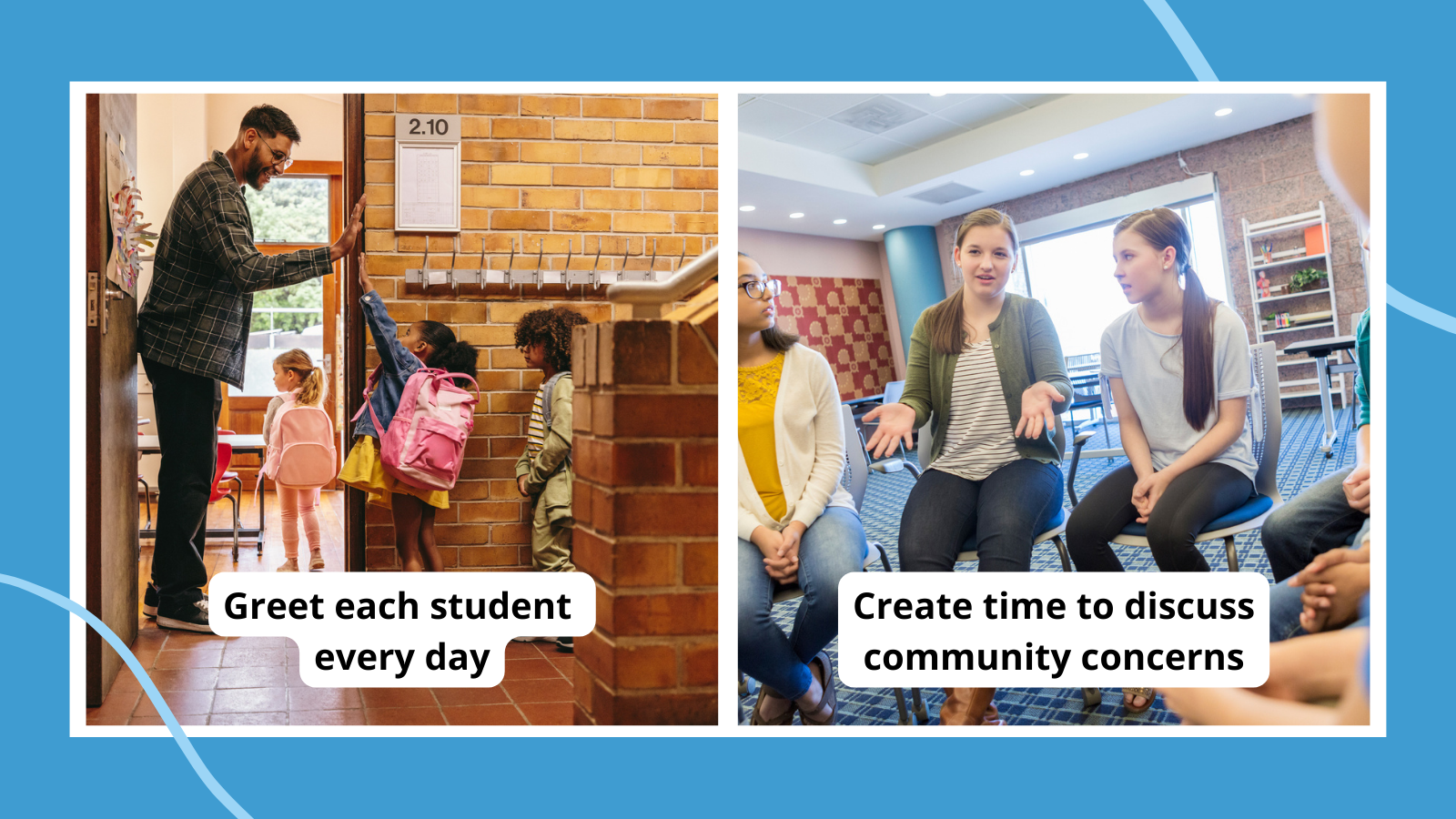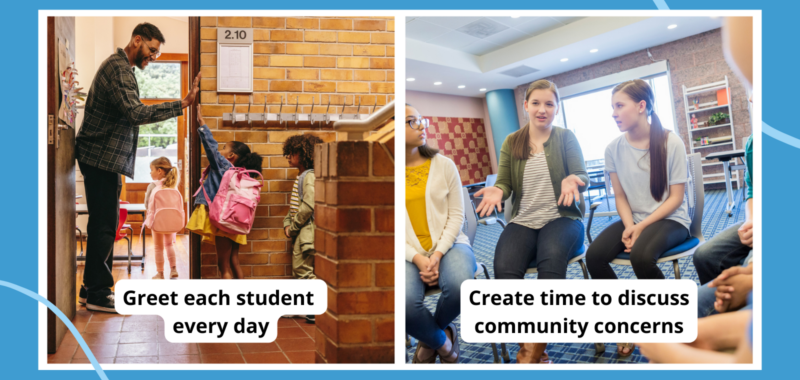
We often talk about the importance of community building in the classroom at the beginning of the school year. You may play “get to know you” games, assign “all about me” activities, or do show-and-tell to learn more about your students and build your community. But community-building activities are not only crucial at the beginning of the school year—they’re really important all year long. Community building is critical to supporting a sense of belonging, which is shown to increase academic performance and decrease the risk of loneliness, depression, and anxiety.
Here are 10 ways you can foster belonging and build classroom community year-round.
1. Collaboratively develop classroom rules and community guidelines at the beginning of the school year.
No matter what grade level we teach, we can empower our students to have voice and agency in their classroom community. At the beginning of the school year, gather together and collaboratively create expectations for the class around how they will treat one another (i.e. listening, being kind, no bullying, etc.). Remember that rules should be more about how we expect to behave towards each other and within the class vs. getting work done and being on time. Creating community rules as a whole class communicates that each individual student’s input is valued. You can return to these throughout the year and revise them or add to them as a community.
2. Incorporate “get to know you” and community-building activities throughout the school year.
Rome wasn’t built in a day, and neither is classroom community. In order to create a sense of belonging, you have to dedicate time throughout the year. In addition, we as people are constantly changing our interests, likes, dislikes, etc. It’s important to continue “get to know you” activities throughout the year so that we can learn and relearn all the amazing things about the individuals in our classroom community. “Get to know you” activities should include sharing with each other as well as reflection that allows children to feel proud of who they are and their importance in the class.
3. Greet each student every day.
Never underestimate the power of a “Good morning. How are you?” These individual hellos can make a huge difference to students, particularly those who may not feel seen or important in spaces at school, at home, or in the community. Greeting students individually can also open up the opportunity for dialogue if a student is in need of more support. The Foundation’s classroom conversation starters can help you get student’s sharing more about themselves.
Setting aside time to work and/or engage with students one-on-one helps foster a sense of belonging. Fostering positive interactions and attention for students from diverse backgrounds is crucial to supporting students’ sense of belonging.
4. Talk openly about belonging uncertainty.
Belonging uncertainty is the feeling of being an outsider, and most people will have that feeling from time to time. Children who regularly feel belonging uncertainty can experience negative effects like poor academic performance. You can help students overcome their doubts about fitting in by talking openly about feelings of loneliness and uncertainty. Have students reflect on times when they’ve felt like they do belong. You can also encourage students to participate in activities where they have a sense of belonging.
5. Regularly build in time each week for socialization.
Equally important to teachers building relationships with students is students building connections with one another. With social times such as play-based programs and recess being reduced or eliminated in many schools, it’s important that we find ways to build times for students to connect with their peers over shared interests and get to know one another outside the context of classwork.
6. Create time to discuss community concerns.
All communities face conflict, and classrooms are no exception. It’s important to set aside time to discuss community concerns and behavior, such as bullying or microaggressions, that impact the safety and security that is necessary for community and a sense of belonging. These conversations can be guided by the community rules as well as students’ experiences of feeling excluded.
7. Let student interests guide your planning.
Belonging is bolstered when students feel that their interests are seen and valued. Find ways to incorporate all student interests, not just the most popular ones/trends, into learning. This could include having book report options with a wide variety of genres, science fairs incorporating student interests, or open days to teach one another about hobbies.
8. Celebrate diverse backgrounds and experiences.
While we often highlight diversity months (Black History Month, Disability Pride Month) and holidays, we really need to be celebrating diverse background experiences year-round. Our students (as well as ourselves) hold intersectional identities that impact the way they experience the world every day. Celebrating these diverse experiences, including family traditions, hobbies, and cultural or religious practices, validates the importance of each unique experience in the classroom community.
9. Explicitly teach feelings and emotions.
Helping students identify feelings and emotions can help them advocate for themselves in places they feel that they don’t belong. For instance, if a student feels excluded at recess and identifies that feeling excluded makes them feel sad, they can voice these feelings to their peers. Peers who understand feelings and emotions can then connect to others through empathy, learning how to include those who feel excluded. The Kids Mental Health Foundation mental health curriculum for teachers can guide you in teaching feelings and emotions in a developmentally appropriate manner.
10. Collaborate with community partners that reflect student backgrounds and experiences.
As our student community grows more and more diverse, the teaching field continues to be predominantly white and female. Thus, our students may not see themselves reflected in the adults in the school community. Collaborating with community partners can provide students with adult mentors who reflect their own lived experiences, bolstering their sense of belonging.

